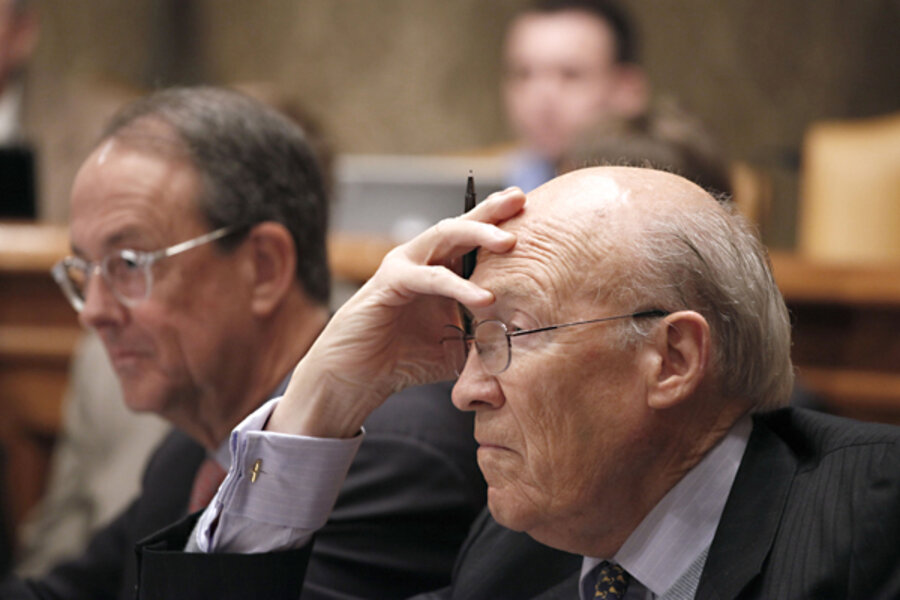Should Congress get rid of tax-exempt municipal bonds?
As politicians and their allies look for ways to finance tax rate cuts, a surprising option is getting a great deal of attention among conservatives: The tax exemption for municipal bonds.
Mitt Romney’s economic adviser Glenn Hubbard, The Wall Street Journal editorial page, and the American Enterprise Institute’s Matt Jensen are among those who in recent weeks suggested limits on tax-exempt bonds. On Aug. 13, Journal editorial writers quoted Hubbard as saying the tax benefit of munis is “on the table” as Romney searches for ways to slash tax preferences.
And the idea is not new. For instance, the tax reform plan offered by the chairs of President Obama’s fiscal commission, Erskine Bowles and Alan Simpson, would also limit the exemption.
Tax-exempt bonds are certainly worthy of discussion. Should the federal government subsidize state and local borrowing? Should it limit the subsidy to general obligation bonds only? If federal subsidies are appropriate, are tax preferences the most efficient way to deliver them?
The answers are not simple. Here are just a few issues worth thinking about:
The effect of lower rates on munis: The very act of lowering tax rates may reduce the attractiveness of tax-exempt debt. To the degree any reform cuts rates, state and local governments may have to pay more to borrow.
To see how it works, think about an investor who can buy either a taxable bond yielding 3 percent or a tax-exempt muni with the same risk and maturity.
In theory, if she’s in the 35 percent bracket a tax-free yield of 1.95 percent would be equal to a 3 percent taxable return. But if Congress cuts her tax rate by 20 percent, her after-tax return on the taxable corporate bond would rise. And to get an equivalent return, she’d demand a 2.16 percent yield on her tax-exempt muni bond, thus raising borrowing costs for the issuer. (In recent years the spread between taxable corporate bonds and tax-free munis has narrowed considerably, but the general rule still applies).
New bonds versus old: Policymakers have two choices here—curbing the tax-exemption for all bonds or for new bonds only. But it is a vexing choice.
First the money: Remember, a goal is to find revenue to help pay for rate reductions. The Tax Policy Center figures that repealing the tax-exemption for high-income investors would generate about $25 billion. But that’s if Congress eliminates the preference for all munis, including existing bonds. If lawmakers cut the exclusion for only new bonds, they’d have only a fraction of the money to play with, at least until all that existing debt matures or is refinanced. There are about $2.7 trillion in outstanding municipal bonds, but on average state and local governments issued only about $380 billion-a-year over the past decade.
Then, there is the politics. Is Congress really going to tell bondholders that those tax-exempts they bought in good faith (and at relatively low yields) are now going to become taxable? Imagine seniors with pitchforks.
On the other hand, if Congress limits the exemption for new bonds but lets old paper remain tax-free, states trying to borrow will be forced to compete for buyers with their own old (tax-free) debt. Imagine state and local finance officers with pitchforks.
Taxable bonds. In 2009, the Obama Administration created taxable Build America Bonds that provided state and local government a direct federal subsidy in lieu of the tax exemption. Investors liked them, but some local governments and many members of Congress did not, and the idea quietly died in 2010.
We may not have heard the last of these, however. If lower tax rates or curbs on the exemption make tax-exempt bonds less attractive, state and local issuers may find themselves rethinking their opposition to federally-subsidized taxable debt.
The fate of munis could be a key issue in any tax reform debate. If you’d like to learn more, check out an upcoming Sept. 21 panel discussion co-sponsored by The Tax Policy Center and George Mason University.






